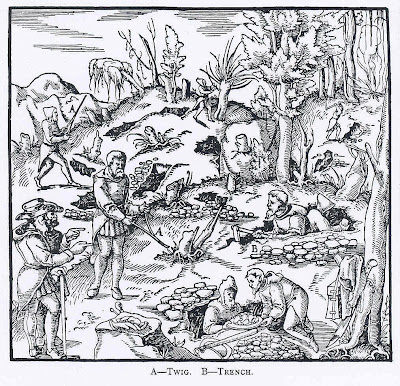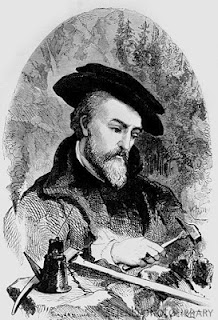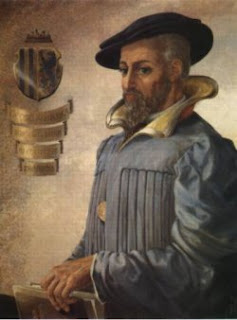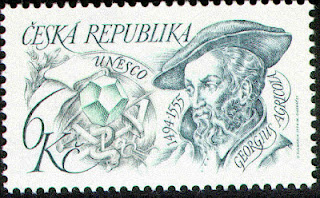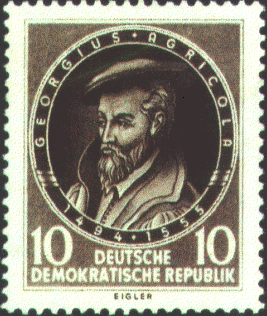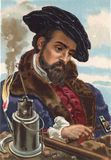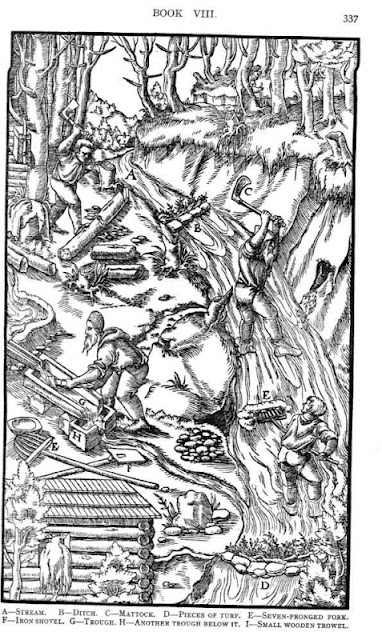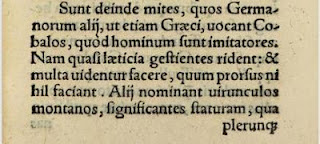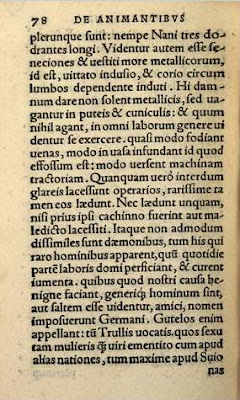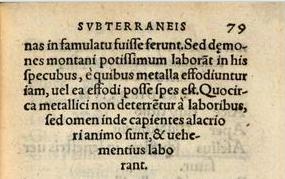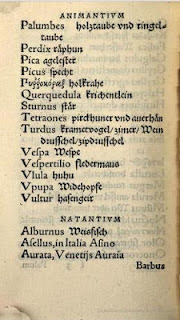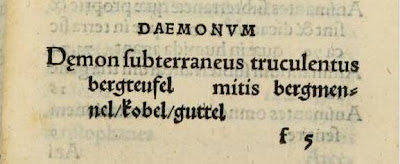Jerzy Agrykola, "O rzeczach metalicznych" (Georgius Agricola, De Re Metallica)
De Re Metallica („O rzeczach metalicznych”) Jerzego Agrykoli (Georgius Agricola, Jiří Agricola, Georg Agricola, 1494-1555), zwanego „ojcem geologii”, jest fundamentalnym źródłem wiedzy na temat średniowiecznego górnictwa, metalurgii i szklarstwa, a także mody, architektury, technologii, obyczajów, wierzeń, organizacji pracy itd.
„In some of our mines, however, though in very few, there are other pernicious pests. These are demons of ferocious aspect, about which I have spoken in my book De Animantibus Subterraneis. Demons of this kind are expelled and put to flight by prayer and fasting.[26]
[26] Then there are [gnomes of] the gentle kind which the Germans as well as the Greeks call cobalos, because they mimic men. They appear to laugh with glee and pretend to do much, but really do nothing. They are called little miners, because of their dwarfish stature, which is about two feet. They are venerable looking and are clothed like miners in a filleted garment with a leather apron about their loins. This kind does not often trouble the miners, but they idle about in the shafts and tunnels and really do nothing, although they pretend to be busy in all kinds of labour, sometimes digging ore, and sometimes putting into buckets that which has been dug. Sometimes they throw pebbles at the workmen, but they rarely injure them unless the workmen first ridicule or curse them. They are not very dissimilar to Goblins, which occasionally appear to men when they go to or from their day’s work, or when they attend their cattle. Because they generally appear benign to men, the Germans call them guteli. Those called trulli, which take the form of women as well as men, actually enter the service of some people, especially the Suions. The mining gnomes are especially active in the workings where metal has already been found, or where there are hopes of discovering it, because of which they do not discourage the miners, but on the contrary stimulate them and cause them to labour more vigorously.”
„W niektórych naszych kopalniach, chociaż w bardzo niewielu, znajdziemy innego rodzaju złośliwe stworzenia. Są to demony złowrogiego rodzaju, o których piszę w mym dziele De Animantibus Subterraneis. Demony takie przepędza się za pomocą modlitwy i postów.[26]
[26] Następnie mamy [gnomy] łagodnego rodzaju, które zarówno Niemcy, jak i Grecy zwą cobalos, ponieważ naśladują one ludzi. Zdają się one śmiać z uciechą i udają, że czynią wiele, lecz tak naprawdę nie robią nic. Nazywają ich „małymi górnikami” z powodu ich niewielkiego wzrostu, który wynosi około dwóch stóp. Wygląd mają czcigodny, a ubrane są tak jak górnicy w plisowany kilt ze skórzanym fartuchem wokół lędźwi. Gnomy tego rodzaju zwykle nie przeszkadzają górnikom, lecz wałęsają się po korytarzach i tunelach, tak naprawdę nie robiąc nic, lecz udając, że wykonują wszelkiego rodzaju prace, takie jak kopanie rudy czy ładowanie urobku do koszy. Czasami ciskają w górników kamykami, rzadko jednak czyniąc im krzywdę, chyba że ci będą je wyśmiewać lub wyklinać. Nie różnią się wiele od goblinów, które ukazują się czasem ludziom, gdy ci idą lub wracają z pracy albo zajmują się bydłem. Ponieważ ogólnie rzecz biorąc wydają się dobrotliwie usposobione względem ludzi, Niemcy nazywają ich guteli. Te zwane trulli, które przyjmują postać tak kobiet, jak i mężczyzn, czasem idą wręcz na służbę do ludzi, zwłaszcza u Sujonów. Kopalniane gnomy są aktywne zwłaszcza tam, gdzie metal został już znaleziony, albo istnieje nadzieja odkrycia go, z którego to powodu nie odstraszają one górników, lecz wręcz przeciwnie, zachęcają ich do jeszcze bardziej wytężonej pracy”.
Źródło: Jerzy Agrykola, "O rzeczach metalicznych" (Georgius Agricola, De Re Metallica)

